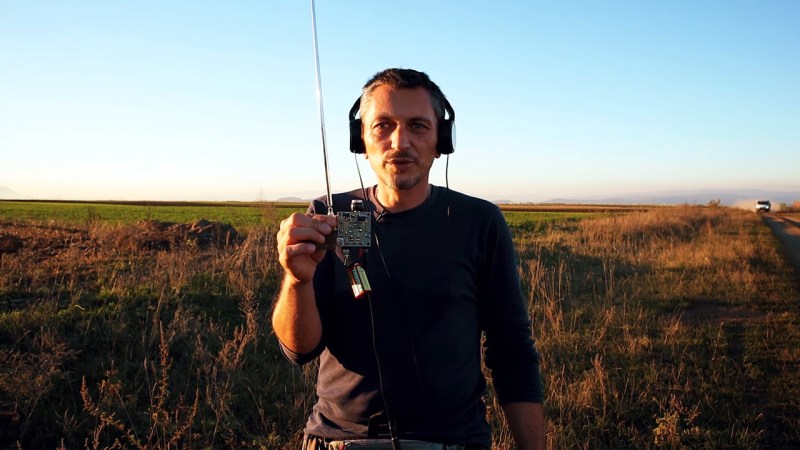It probably comes as little surprise that our planet is practically buzzing with radio waves. Most of it is of our own making, with cell phones, microwaves, WiFi, and broadcasts up and down the spectrum whizzing around all the time. But our transmissions aren’t the only RF show in town, as the Earth itself is more than capable of generating radio signals of its own, signals which you can explore with a simple sferics receiver like this one.
If you’ve never heard of sferics and other natural radio phenomena, we have a primer to get you started. Briefly, sferics, short for “atmospherics,” are RF signals in the VLF range generated by the millions of lightning discharges that strike the Earth daily. Tuning into them is a pretty simple proposition, as [DX Explorer]’s receiver demonstrates. His circuit, which is based on a design by [K8TND], is just a single JFET surrounded by a few caps and resistors, plus a simple trap to filter out the strong AM broadcast signals in his area. The output of the RF amplifier goes directly into an audio amp, which could be anything you have handy — but you risk breaking [Elliot]’s heart if you don’t use his beloved LM386.
This is definitely a “nothing fancy” build, with the RF section built ugly style on a scrap of PCB and a simple telescopic whip used for an antenna. Tuning into the Earth’s radio signals does take some care, though. Getting far away from power lines is important, to limit AC interference. [DX Explorer] also found how he held the receiver was important; unless he was touching the ground plane of the receiver, the receiver started self-oscillating. But the pips, crackles, and pings came in loud and clear on his rig; check out the video below for the VLF action.
















Oh, I thought maybe radio signals from earthquake piezo would be mentioned.
Is that a thing?
I found one paper that identified ULF activity in the ionosphere at plate boundaries but that was in the ULF range and he’s looking in VLF range.
However another paper says earthquakes are detectable at VLF ranges — unfortunately it requires a “borehole antenna” and my spouse might object (https://www.sciencedirect.com/science/article/abs/pii/S0031920197001179)
Would be super cool to detect plate shifts though.
Wow, that’s very cool! I’m sure your spouse would be fine with it. Just bring in the drill rig when their not looking.
reminded me about The INSPIRE Project (https://theinspireproject.org/default.asp?contentID=4)
Would be fun to try and use a barbed wire fence around a large property for it’s antenna,
There ist a very good site for VLF-Projects: http://www.vlf.it/
Could a RasPi be used as an active filter to get rid of 60 Hz noise so that a VLF receiver can be used at home ?
The presentation was really nice, I liked the video a lot, but I have only been able to hear some crackling from nearby electrostatic discharges and some mains hum. As a total VLF noob, aside from SAQ transmitter, can you hear something more exciting on those bands with such a capacitive antenna? It is grossly mismatched at acoustic frequencies. I was under the impression that you kind of need a large ferrite antenna to receive the magnetic component to really get into the stuff.
Can I detect UFOs with this?
If a ufo is flying at 15km/s then it’s probably transmitting just as fast.